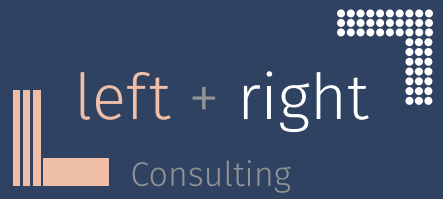Retention strategies you can start today!
- Sarah Badcock

- Nov 30, 2023
- 3 min read

Is your business using retention strategies in 2023? If not, here’s a guide to getting started.
Your cheapest customer is the one who already bought from you.
Think about it; you already know who they are, where they live, what they like to buy, and there’s a good chance they like your brand.
It’s a great start to building a long relationship full of repeat purchases and nurtured engagements.
Why is a repeat buyer more profitable than a new customer?
In short, you don’t have to spend to acquire them.
Prospect marketing can be guesswork. Yes, strategic guesswork if you do your targeting and analysis; nevertheless, it’s not guaranteed to work.
You base new customer marketing on spending to acquire data, preferences, consent, engagement, and conversion. Naturally, the budget for this has to be higher because for each customer who opts in, signs up, downloads, submits a form or buys, plenty more won’t. The targeting or data won’t be right for everyone to become a customer or lead.
Once you have their engagement, however, the value is all yours.
With retention marketing, the real superpower is in harnessing customer data to nurture their interactions with your brand and guide them through the repeat purchase process. Often a repeat buyer has a higher average order value and will recommend you to others.
That’s why we refer to VIP marketing.
In summary, a retained customer or client is a more cost-effective acquisition the longer they remain loyal.
Overtime:
Cost per conversion comes down
Return on advertising spend goes up
Average order value goes up
Propensity to recommend goes up
Lifetime value goes up
Types of retention strategy
There are a few types of retention strategies your marketing team could adopt. Offering ‘thank you’ discounts, loyalty cards, membership schemes, and discount codes are traditional customer retention marketing strategies. Think of your Boots Loyalty Card or Tesco Clubcard where you receive points that you can use against future purchases or offers.

We also see newer techniques to extend the relationship, such as referral codes via influencers and brand ambassadors.
Businesses like John Lewis retain customers by providing excellent customer service. Buyers return to their stores or website based on the reassurance of extended warranties, guarantees and a no-quibble returns process.
Other brands keep customers returning by offering something entertaining or of greater value. For example, Innocent communicates with customers in a familiar, jokey style and gives back to community projects that resonate with customers when they purchase.
Examples of great retention marketing techniques
Email. Use customer data to build a good customer relationship before, during and after an initial purchase. Sign-up incentives, welcome programmes, abandoned basket remarketing, thank you emails, and regular newsletters are great ways to build engagement with consent.
You can also use email to send messages with offers or gifts to note birthdays, and anniversaries, ask for feedback or invite customers to special events.

Social. Repeat customers with a positive experience are the best advocates. Use social media to share exclusive content, ask for reviews, share user-generated content, feature happy customers, and keep the engagement going to a wider audience. Word of mouth and influence are two key factors in reminding customers you exist and why they bought from you in the first place.
Data. Mine your data to optimise the repeat customer journey. Good quality data will tell you what and when your customers or clients last engaged with your business or product, and use this information to make repeat purchases faster and easier.
Use the information you have to speak to them by making them feel as though you know them e.g. personalised details and tailored messaging – ‘Hi xx, this time last year you bought / booked xx. We thought you might like this’.
You can also use data to speed up the purchase process, e.g., pre-filled shipping information.
Customer service. Provide great live chat support that recognises a return customer or a chatbot to help them resolve issues. Provide various delivery options, including express shipping and longer options that offset carbon emissions.
After the sale, offer loyalty benefits such as points, discounts, or referral codes. And if a customer does want to return your product, make it easy. After all, 33% of repeat customers abandon a retailer if they have a difficult return experience.




